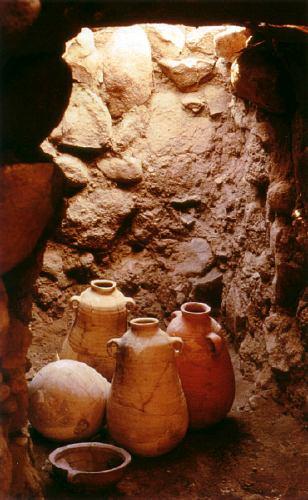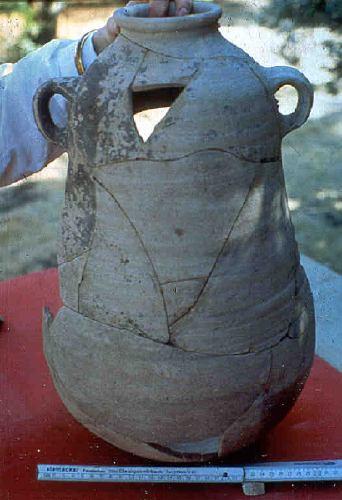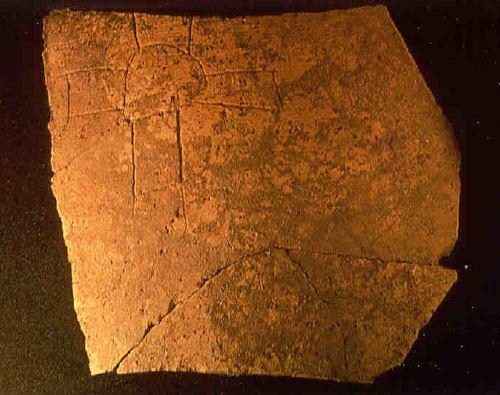Source - http://popular-archaeology.com/issue/september-2012/article/road-from-time-of-earliest-christian-apostles-uncovered-at-bethsaida

Excavators at work in "Area C" at the Bethsaida site. Courtesy Nicolae Roddy
Sitting and kneeling among a scattering of stones large and small, a small group of archaeologists, students and volunteers gradually dug and scraped their way down to reveal the remains of what was likely a paved road that was used by some of the earliest Christian apostles. They were digging at a site just 2 km from the northeast shore of the Sea of Galilee in Israel. Leading the group was Dr. Nicolae Roddy of Creighton University, Omaha, Nebraska. They were focusing on features recently revealed in an area labeled "Area C" of the excavation site plan. He and his excavation colleagues were assigned to carefully uncover and explore an area that contained finds of the Roman period of ancient Bethsaida, the fishing town that was, according to the Biblical account, the home of the New Testament Christian apostles Peter, Andrew and Phillip, and likely James and John as well.
"We uncovered a paved street from the time of Jesus's disciples, which runs westward through the residential area from the corner of the Fisherman's House [an excavated structural feature so-named because of the fishing implements associated with it] down toward the Jordan valley", said Roddy. "I tell people that Andrew, Peter, and Phillip almost certainly walked on it because they would have had to have gone out of their way to avoid it!"
The paved road is actually only one feature among many remarkable finds uncovered in recent years during excavations at the ancient site. Identifying it as the possible site of Bethsaida in 1987, University of Nebraska's Dr. Rami Arav, Director of the Bethsaida Excavations Project for more than 20 years, has thus far revealed a settlement site that saw human occupation from before the time of the early Israelite and Judahite kings up through Hellenistic and Roman times and beyond. And although the site is best known in the literature as the birth and dwelling place of some of the Christian apostles and the fishing village frequented by Jesus where some of the best-known miracles of the Biblical account were performed, it is now also thought to be the site where, 3,000 years ago, the ancient Geshurites established the capital of their kingom (Biblical Geshure). Among the more ancient finds of this earlier period are a massive 4-chambered city gate complex, massive defensive walls, a palace, and clear evidence of a destruction event dated to the time of the invasion by the Assyrian King Tiglath Pileser III in 732 B.C.
The Kingdom of Geshur is known from the Hebrew Bible as being closely allied with ancient Israel during the period of the United Monarchy of kings David and Solomon, and for having been visited by King David, who married Ma'achah, the daughter of the king of Geshur.

Four large wine jars found in a wine cellar of a large house. Courtesy Bethsaida Excavations Project and the Virtual World Project

Storage jar from the vintner's house. Courtesy Bethsaida Excavations Project and the Virtual World Project

Engraved cross on a pottery sherd, found in the vintner's house. Courtesy Bethsaida Excavations Project and the Virtual World Project
Other finds at Bethsaida related to the Roman period and the time of Jesus and the early apostles have included the remains of a Roman temple, presumably built by Tetrarch Herod Phillip, a well-preserved incense shovel used in connection with temple ritual practices, a wine cellar with associated pottery, what has been interpreted as a vintner's house, and numerous pottery sherds and fishing implements of the Roman period. From another area of the site containing finds from earlier periods, the latest completed excavaton season in 2012 revealed locally-made copies of Egyptian seals, among other finds.
Archaeologists and teams of students and volunteers will be returning to Bethsaida during the summer of 2013 to continue excavations at the site. For more information about the Bethsaida excavations, see the website at http://world.unomaha.edu/bethsaida.